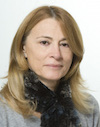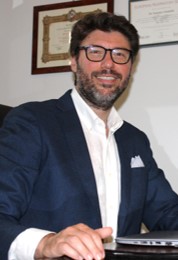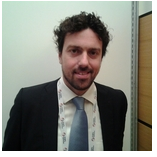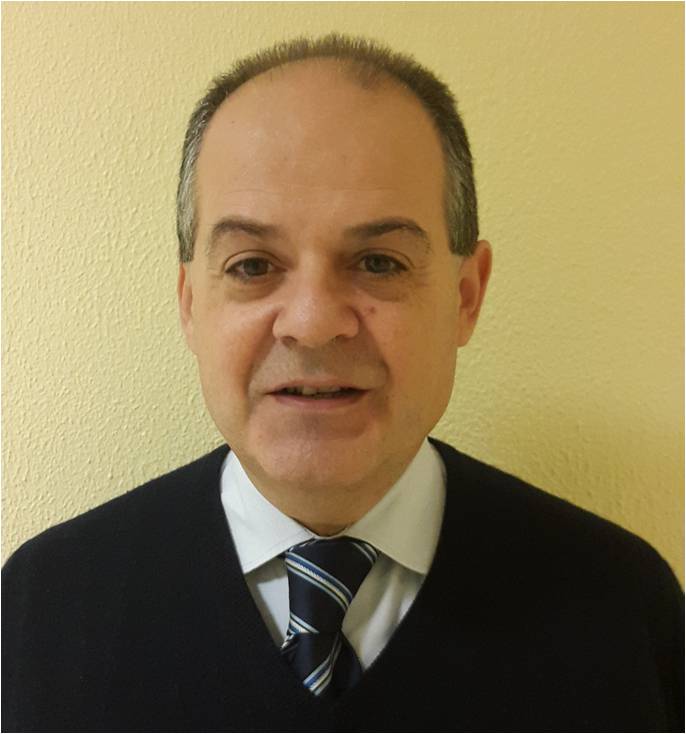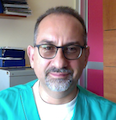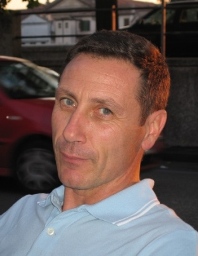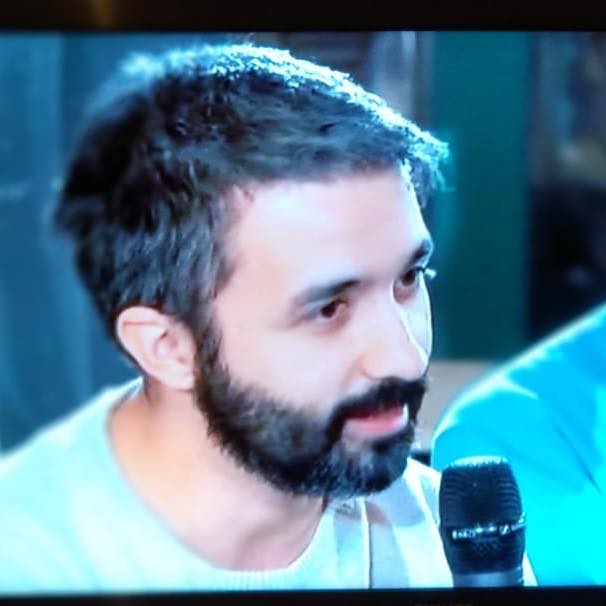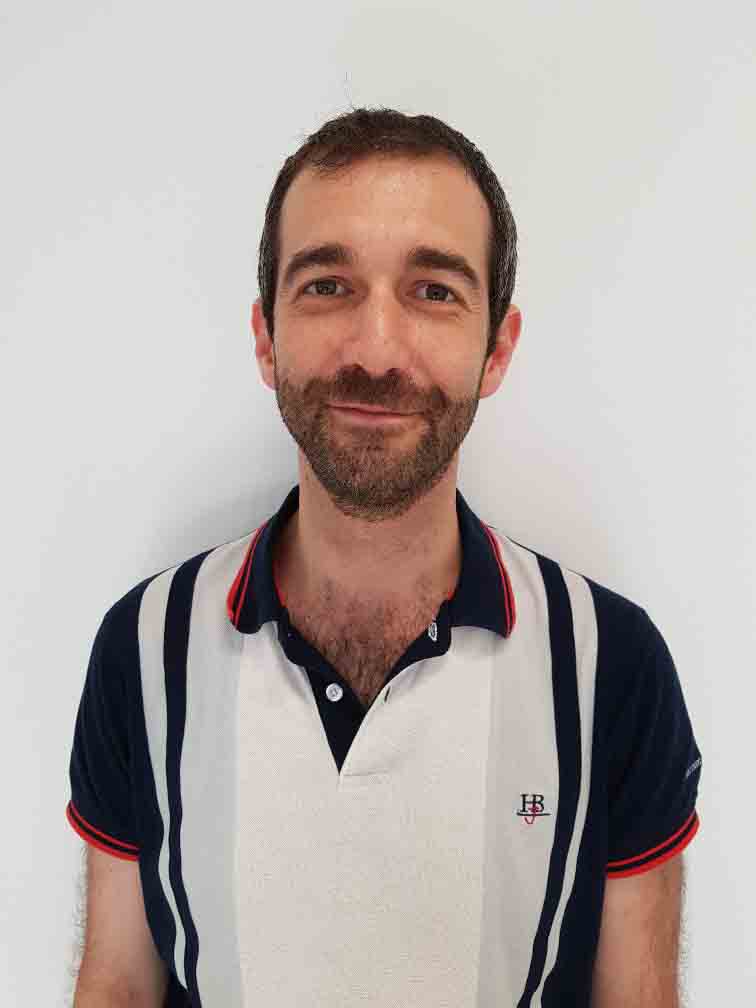Formazione e ricerca
Attività Formative del Corso di Dottorato - 2023/2024
This page shows the courses and classes of the PhD programme for the academic year 2023/2024. Additional courses and classes will be added during the year. Please check for updates regularly!
Artriti e patologia ossea
Crediti: 2
Lingua di erogazione: Italiano
Docente: Davide Gatti
Come fare una meta-analisi con R
Crediti: 1
Lingua di erogazione: Italiano/English
Docente: Alessandro Mantovani
Bone specialist
Crediti: 2
Lingua di erogazione: English
Docente: Maurizio Rossini
Ematologia Sperimentale e cellule staminali
Crediti: 1
Lingua di erogazione: Italiano
Docente: Mauro Krampera
Ferroptosi e malattie cardiovascolari
Crediti: 0,5
Lingua di erogazione: Italiano
Docente: Anna Maria Fratta Pasini
Fisiopatologia e clinica del prurito
Crediti: 0,5
Lingua di erogazione: Italiano e/o Inglese
Docente: Giampiero Girolomoni
NAFLD & systemic complications - Translational medicine
Crediti: 0,8
Lingua di erogazione: English
Docente: Giovanni Targher
Nuove strategie terapeutiche nelle malattie infiammatorie croniche intestinali
Crediti: 0,5
Lingua di erogazione: Italiano
Docente: Rachele Ciccocioppo
Fisiopatologia e clinica del prurito (2023/2024)
Docente
Referente
Crediti
0,5
Lingua di erogazione
Italiano e/o Inglese
Frequenza alle lezioni
Scelta Libera
Sede
VERONA
Obiettivi di apprendimento
L'obbiettivo del corso è discutere i meccanismi neuro-fisiologici del prurito,
i principali mediatori chimici coinvolti, la rilevanza clinica del sintomo,
le principali malattie nelle quali il sintomo è dominante e gli aspetti terapeutici del prurito nelle principali patologie.
Prerequisiti e nozioni di base
Il dottorando dovrà dimostrare di sapersi destreggiare nel contesto delle varie metodologie del metodo scientifico
Programma
Pruritus is defined as an unpleasant sensation that provokes the desire to scratch. Pruritus is a common
symptom of numerous inflammatory skin diseases, and it can be severe enough to interfere with sleeping
and daily activities, and impact markedly on patients’ quality of life. Chronic pruritus (CP) is defined
clinically by its persistence for more than 6 weeks and it is a frequent complaint in the general population,
with a 13.5-16.8% point prevalence. CP can be classified on the basis of its underlying aetiology as
dermatological, systemic, neurological, somatoform or multifactorial [3] . The neurophysiology and basic
mechanisms underlying CP have been recently elucidated using animal models and with clinical studies,
contributing to new pathophysiological and therapeutic concepts. CP is a common symptom of a
heterogeneous spectrum of cutaneous inflammatory skin diseases, which have been recently re-classified
according to their immune response pattern, based on specific cellular and cytokine signatures.
The itch sensation usually originates around the dermo-epidermal junction by the activation of selective or
specific nerve endings called pruriceptors. Then, itch is processed and transmitted by specific pathways
through nerves and the spinal cord to the brain. At least two classes of primary afferent C fibers transmit
itch, mechano-insensitive C fibers and mechano-responsive polymodal C-nociceptor units, as well as thinly
myelinated Aδ fibers afferents. Specific receptors located on these fibers can be activated by a large
number of endogenous itch-inducing agents released by keratinocytes, immune cells or neighbouring
neuronal afferent and exogenous agents, such as proteases released by Staphylococcus aureus. These
sensory neurons have cell bodies in the dorsal root ganglion (DRG) and project primary afferents to the
skin, and they send projections to the dorsal horn of the spinal cord, where they synapse with second- or
third-order neurons, that come together to form part of the spinothalamic tract, which then ascends up to
the thalamus and proceed to the somatosensory and the anterior cingulate cortex. Second- and third-order
neurons in the spinal cord may have either excitatory or inhibitory functions. Pathways of itch are complex
and not fully established. Moreover, pruritus and pain pathways are largely overlapped and interrelated,
though the exact relationships are still a matter of debate. Several chemical pruritogens and some physical
stimuli have been experimentally used to elicit itch to investigate pruritus pathways and test potential anti-
pruritic drugs. However, no objective methods to elicit and to evaluate itch have been standardized.
Pruritus is a common symptom of several skin diseases, both inflammatory and neoplastic. Pruritus may
have a tremendous impact on the patients’ quality of life and strongly interfere with sleep, social and work
activities. We review the role of type-2 inflammation and immunity in the pathogenesis of chronic pruritic
conditions of the skin. Type 2 cytokines, including IL-4, IL-13, thymic stromal lymphopoietin, periostin, IL-
31, IL-25 and IL-33 are released by mast cells, innate lymphoid cells 2, keratinocytes and type 2 T
lymphocytes and are master regulators of chronic itch. These cytokines may act as direct pruritogen on
primary sensory neurons (pruriceptors) or alter the sensitivity to other itch mediators Type 2 inflammation-
and immunity-dominated skin diseases, including atopic dermatitis, prurigo nodularis, bullous pemphigoid,
scabies, parasitic diseases, urticaria, and Sézary syndrome are indeed conditions associated with most
severe pruritus. In contrast, in other skin diseases, such as scleroderma, lupus erythematosus, hidradenitis
suppurativa, and acne, type 2 inflammation is less represented, and pruritus is milder or variable. Th2
inflammation and immunity have evolved to protect against parasites, and thus, the scratching response
evoked by pruritus may have developed to alert about the presence and to remove parasites from the skin
surface.
Quando e Dove
Lezioni frontali
Incontri individuali
Modalità di verifica dell'apprendimento
Colloquio orale
Valutazione
Valutazione delle abilità nel progettare attività di ricerca del dottorando
Criteri di composizione del voto finale
Idoneità
Attività Formative della Scuola di Dottorato - 2023/2024
Please note: Additional information will be added during the year. Currently missing information is labelled as “TBD” (i.e. To Be Determined).
PhD students must obtain a specified number of CFUs each year by attending teaching activities offered by the PhD School.
First and second year students must obtain 8 CFUs. Teaching activities ex DM 226/2021 provide 5 CFUs; free choice activities provide 3 CFUs.
Third year students must obtain 4 CFUs. Teaching activities ex DM 226/2021 provide 2 CFUs; free choice activities provide 2 CFUs.
Registering for the courses is not required unless explicitly indicated; please consult the course information to verify whether registration is required or not. When registration is actually required, no confirmation e-mail will be sent after signing up.
Activities are also listed in the online calendar.
Teaching Activities ex DM 226/2021: Linguistic Activities
INFORMATION: ENGLISH FOR ACADEMIC PRESENTATION SKILLS [Arts and Humanities]
Crediti: 2,5
Lingua di erogazione: Inglese
INFORMATION: ENGLISH FOR ACADEMIC PRESENTATION SKILLS [Law and Economics]
Crediti: 2,5
Lingua di erogazione: Inglese
INFORMATION: ENGLISH FOR ACADEMIC PRESENTATION SKILLS [Life and Health Sciences - 1 st Session]
Crediti: 2,5
Lingua di erogazione: Inglese
INFORMATION: ENGLISH FOR ACADEMIC PRESENTATION SKILLS [Life and Health Sciences - 2 nd Session]
Crediti: 2,5
Lingua di erogazione: Inglese
INFORMATION: ENGLISH FOR ACADEMIC PRESENTATION SKILLS [Natural Sci. and Engineering-1st Session]
Crediti: 2,5
Lingua di erogazione: Inglese
INFORMATION: ENGLISH FOR ACADEMIC PRESENTATION SKILLS [Natural Sci. and Engineering-2nd Session]
Crediti: 2,5
Lingua di erogazione: Inglese
INFORMATION: ENGLISH FOR ACADEMIC WRITING SKILLS [Arts and Humanities]
Crediti: 2,5
Lingua di erogazione: Inglese
INFORMATION: ENGLISH FOR ACADEMIC WRITING SKILLS [Law and Economics]
Crediti: 2,5
Lingua di erogazione: Inglese
INFORMATION: ENGLISH FOR ACADEMIC WRITING SKILLS [Life and Health Sciences - 1 st Session]
Crediti: 2,5
Lingua di erogazione: Inglese
INFORMATION: ENGLISH FOR ACADEMIC WRITING SKILLS [Life and Health Sciences - 2 nd Session]
Crediti: 2,5
Lingua di erogazione: Inglese
INFORMATION: ENGLISH FOR ACADEMIC WRITING SKILLS [Natural Sci. and Engineering-1st Session]
Crediti: 2,5
Lingua di erogazione: Inglese
INFORMATION: ENGLISH FOR ACADEMIC WRITING SKILLS [Natural Sci. and Engineering-2nd Session]
Crediti: 2,5
Lingua di erogazione: Inglese
Teaching Activities ex DM 226/2021: Research management and Enhancement
SEMINARIO AVANZATO SULLE RISORSE BIBLIOTECARIE PER LA RICERCA [Arts and Humanities]
Crediti: 2,5
Lingua di erogazione: Italiano
Docente: Donatella Boni
SEMINARIO AVANZATO SULLE RISORSE BIBLIOTECARIE PER LA RICERCA [Law and Economics]
Crediti: 2,5
Lingua di erogazione: Italiano
Docente: Luisella Zocca
SEMINARIO AVANZATO SULLE RISORSE BIBLIOTECARIE PER LA RICERCA [Scientific Area]
Crediti: 2,5
Lingua di erogazione: Italiano
Docente: Elena Scanferla
Teaching Activities ex DM 226/2021: Statistics and Computer Sciences
INTRODUCTION TO PROBABILITY (MODULE I)
Crediti: 1
Lingua di erogazione: Inglese
Docente: Marco Minozzo
INTRODUCTION TO PROBABILITY (MODULE II)
Crediti: 1
Lingua di erogazione: Inglese
Docente: Marco Minozzo
BASIC LEVEL STATISTICS - RECOMMENDED FOR HUMAN SCIENCES
Crediti: 2,5
Lingua di erogazione: Inglese
INTRODUCTION TO STATISTICAL INFERENCE
Crediti: 1
Lingua di erogazione: Inglese
VALIDITY AND RELIABILITY OF MEASUREMENTS AND DIAGNOSTIC TESTS
Crediti: 0,5
Lingua di erogazione: English
Docente: Alessandro Marcon
BASIC LEVEL STATISTICS
Crediti: 2,5
Lingua di erogazione: Italiano
Statistical analysis with R - module I
Crediti: 1
Lingua di erogazione: Italiano
Docente: Erica Secchettin
Generalized linear models: logistic regression, loglinear model, Poisson model
Crediti: 2
Lingua di erogazione: English
Docente: Lucia Cazzoletti
STUDY DESIGN IN OBSERVATIONAL AND EXPERIMENTAL RESEARCH
Crediti: 1,5
Lingua di erogazione: English
Docente: Alessandro Marcon
DETERMINATION OF SAMPLE SIZE TO ACHIEVE A PREDEFINED PRECISION OR POWER
Crediti: 1
Lingua di erogazione: Inglese
Docente: Giuseppe Verlato
INTRODUCTION TO META-ANALYSIS, FOCUSED ON MEDICAL RESEARCH (LITERATURE REVIEW, DATA COLLECTION, DATABASE CONSTRUCTION)
Crediti: 1
Lingua di erogazione: English
Docente: Giuseppe Verlato
APPLICATION OF META-ANALYSIS TO THE EPIDEMIOLOGICAL OR MEDICAL FIELD
Crediti: 1
Lingua di erogazione: Inglese
Docente: Giuseppe Verlato
Survival analysis: log-rank test, Kaplan-Meier survival curves, Cox regression model
Crediti: 1,5
Lingua di erogazione: Inglese
Docente: Simone Accordini
Application of meta-analysis to the epidemiological or medical field
Crediti: 1
Lingua di erogazione: English
Docente: Giuseppe Verlato
INTERMEDIATE STATISTICS [Recommended for Human Sciences]
Crediti: 2,5
Lingua di erogazione: Inglese
INTERMEDIATE STATISTICS [Tutti i corsi di studio]
Crediti: 2,5
Lingua di erogazione: Inglese
Introduction to meta-analysis, focused on medical research (literature review, data collection, database construction)
Crediti: 1
Lingua di erogazione: English
Statistical analysis with R - module II
Crediti: 2
Lingua di erogazione: Italiano
Docente: Erica Secchettin
Teaching Activities: Free choice
PROTECTING PSYCHOLOGICAL WELL-BEING IN THE PHD PROGRAM: WHAT DO WE NEED TO CONSIDER FOR BEING A GOOD SCIENTIST: BEST PRACTICE AND THE ETHICS OF SCIENCE
Crediti: 1
Lingua di erogazione: inglese
Docente: Paola Cesari
QUANDO LA RICERCA SI FA ETICA (PERCORSO ORGANIZZATO E FINANZIATO DAL TEACHING AND LEARNING CENTER DI UNIVR)
Crediti: 2
Lingua di erogazione: Italiano
Docente: Roberta Silva
IMPARA IL MARKETING DIGITALE
Crediti: 1,5
Lingua di erogazione: English
LA POESIA ITALIANA ALL’ESTERO
Crediti: 1
Lingua di erogazione: Italiano
Docente: Massimo Natale
COSTRUISCI IL TUO BUSINESS MODEL CANVAS
Crediti: 1,5
Lingua di erogazione: English
APPROCCI E METODOLOGIE PARTECIPATIVE NELLA RICERCA CON GLI ATTORI DEL TERRITORIO
Crediti: 1,5
Lingua di erogazione: Italiano
Docente: Cristiana Zara
DOING INTERVIEWS IN QUALITATIVE RESEARCH
Crediti: 1,5
Lingua di erogazione: English
Docente: Chiara Sità
LA COMUNICAZIONE UMANISTICA: OPPORTUNITA' E RISCHI
Crediti: 1
Lingua di erogazione: Italiano
DIFFERENTIAL DIAGNOSIS OF DEMYELINATING DISEASES OF THE CENTRAL NERVOUS SYSTEM
Crediti: 2
Lingua di erogazione: English
Docente: Alberto Gajofatto
IL SONNO E I SUOI DISTURBI: FOCUS SULLE PARASONNIE E I DISTURBI DEL MOVIMENTO IN SONNO
Crediti: 1
Lingua di erogazione: English
Docente: Elena Antelmi
IMAGING TECHNIQUES FOR BODY COMPOSITION ANALYSIS
Crediti: 1
Lingua di erogazione: English
Docente: Carlo Zancanaro
OPEN SCIENCE: THE MIGHTY STICK AGAINST "BAD" SCIENCE
Crediti: 2
Lingua di erogazione: English
Docente: Alberto Scandola
THE EMPIRICAL PHENOMENOLOGICAL METHOD (EPM): THEORETICAL FOUNDATION AND EMPIRICAL APPLICATION IN EDUCATIONAL AND HEALTHCARE FIELDS
Crediti: 2
Lingua di erogazione: English
THE PATHWAY OF OXYGEN: CAUSE OF HYPOXEMIA
Crediti: 1
Lingua di erogazione: English
Docente: Carlo Capelli
Docenti
 yuri.battaglia@univr.it
yuri.battaglia@univr.it
 elena.carrara@univr.it
elena.carrara@univr.it
 davide.gatti@univr.it
davide.gatti@univr.it
Dottorandi
Non è presente alcuna persona. 40° Ciclo non iniziato.
Loading...
Linee guida percorso formativo
Di seguito i file che contengono le Linee guida per il percorso formativo e il regolamento per l'acquisizione dei crediti formativi (CFU) per l'Anno Accademico 2023/2024.

 +39 045 812 6485
+39 045 812 6485


